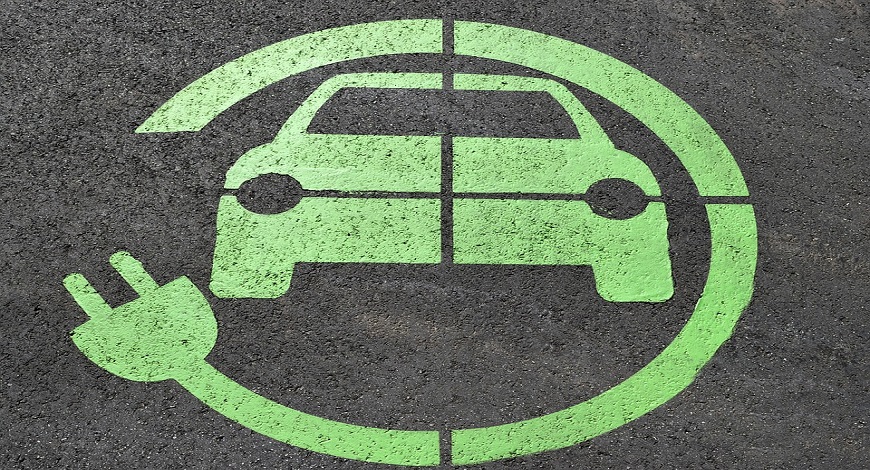
In the traditional linear economy, resources have long been treated as disposable commodities. Extract, manufacture, consume, and discard, or ‘take-make-dispose,’ has been the mantra, regardless of the long-term consequences. It’s a model primarily driven by profitability, often disregarding the entire product life cycle and the environmental impact of the product when it becomes waste. The circular economy presents a contrasting philosophy. It revolves around the concept of keeping resources in use for as long as possible, preventing waste, and reimagining what was once considered disposable as valuable assets waiting to be reclaimed. This fundamental shift towards a waste-free paradigm holds the promise of not only reducing our environmental footprint but also conserving precious resources, often translating into cost savings for individuals and businesses alike.
Previously, we covered how we at LOHUM rediscovered battery repurposing or reuse, and its main benefits over direct-to-recycling. Battery reuse is a key vertical of industrial decarbonization efforts, and this publication overviews why this sustainable practice is the ideal entryway for energy transition ecosystem assets to enter a circular economy.
Battery reuse stands as a luminous example of this transformation from a linear to a circular economy. (EV) Electric vehicle batteries, when they reach the end of their automotive life, still retain a remarkable residual capacity of around 70%, according to reports featured on Deloitte, and could also be around 50 to 70% cheaper than first-life ESS. The cells in these batteries, far from being rendered useless, can be repurposed and reassembled for second-life applications, or, if unsuitable for a second-life, recycled to recover raw materials. Thus, battery reuse serves as the ideal entryway for energy storage ecosystem assets, and for energy transition raw materials to enter the closed-loop secondary materials ecosystem, destined then to recirculate ad infinitum.
The significance of this process in the broader context of sustainability and environmental responsibility cannot be overstated. We find ourselves at a crossroads, with electric vehicles projected to dominate the lithium-ion battery market, as plug-in vehicles are slated to experience almost 3x growth in sales between 2021 to 2025, according to reports featured on BloombergNEF. However, the production of electric vehicles, while critical for reducing our reliance on fossil fuels, carries its environmental burden.
On average, manufacturing an electric vehicle contributes twice as much to global warming potential and consumes double the amount of energy compared to producing a combustion engine vehicle. The primary driver of this environmental impact is the battery. The journey of a battery, from the extraction of battery raw materials to its final assembly, consumes substantial energy resources. Thus, battery reuse is not merely a choice; it is imperative in the fight against climate change.
The metamorphosis into a circular economy isn’t just a shift in perspective; it’s a comprehensive rethinking of how we design, produce, and consume products. At the heart of this shift lies the materials transition – The process of creating better, more sustainable materials for our products and ensuring that their environmental footprint is minimized at every stage of their life cycle. In the context of battery reuse, this entails the development of efficient processes that can recycle materials that were once considered of low value. Choosing to embrace battery reuse, be it by individuals, companies, institutions, or governments, is a decision that extends beyond the microcosm of individual choices and resonates in the macrocosmic realm of global sustainability.
Battery reuse boosts cost-effectiveness, as it not only decreases the upfront costs of electric vehicle batteries thanks to battery demand easing but also increases the value of used EVs. It is a practical step towards making sustainability more accessible to a broader audience. By extending the life of batteries, the practice of reuse can significantly reduce the gross energy demand and global warming potential generated by conventional mining activities. It’s a commitment to reducing carbon emissions, that lasts well beyond a battery’s initial purpose. Battery reuse or repurposing is an easy-to-implement choice for eco-friendly energy. As aforementioned, it prevents pollution, conserves valuable resources, saves money, stimulates economic growth, and fosters the principles of sustainability that our future depends upon.
To top off all the paradigm-shifting impacts of battery second life, the applications for repurposed batteries are diverse and versatile. They can serve as power sources for stationary energy storage systems, working in tandem with renewable energy sources, for any scale of demand ranging from homes to schools to offices and more. This versatility offers solutions to load-shedding issues, providing backup power during peak demand periods and bolstering the stability of our energy grids, a problem faced by an increasingly energy-intensive India.
To conclude, battery reuse is a field of immense promise, offering a tangible pathway to global climate action and a critical component of the materials transition towards a Net Zero and Zero Waste circular economy. It requires not only technological advancements of the kind being undertaken at LOHUM but also a profound consideration of its environmental impact, supply chain security, and geopolitical implications for resource management. We at LOHUM have been proponents of battery reuse ever since our R&D teams discovered the significant and diverse circular economy possibilities they herald. And now, various clean energy transition ecosystem stakeholders like EV OEMs, insurance & underwriting companies, cell manufacturers, EV & battery infrastructure companies, and more, are signing disruptive partnerships with LOHUM to accelerate battery reuse.
Choosing to embrace battery reuse is not merely a linear decision; it’s a pathway, a circular catalyst for a sustainable future. Each battery we extend the life of, and each material we recycle, is a contribution to the grand journey towards a circular economy of energy. Second-life batteries are a collective endeavor, one that acknowledges the undeniable interconnection between the microcosm of individual actions and the macrocosm of our planet’s future.
Keep up with LOHUM’s publication on simplifying batteries and battery recycling, #BatteryDecoded, on our LinkedIn page for more insightful content on sustainability, battery energy, energy transition, circular economy, battery recycling, and battery repurposing!
Related blogs
This entrepreneur wants India to make its own lithium-ion cells for electric vehicle batteries

Forbes India
Rajat Verma already recovers raw materials from used cells at his venture, LOHUM Cleantech. He wants to close the loop by making cells in India as well.
India needs integrated recycling and repurposing battery business model: Rajat Verma of LOHUM Cleantech

YOURSTORY
In an interaction with AutoStory, Rajat Verma, Founder and CEO of LOHUM Cleantech, speaks about building his company, and about battery manufacturing and repurposing as an industry.
Sourcing Raw Materials Is A Big Challenge In Li-ion Battery Space: Founder Lohum

Business World Disrupt
Recognized as ‘The Most Innovative Company of the year 2022’ by The Confederation of Indian Industry (CII), LOHUM is a producer of sustainable Li-ion battery raw materials
1800 572 8822
Email : enquiry@lohum.com
G98, Site, 5, Kasna, Block A, Surajpur Site V, Greater Noida, Uttar Pradesh 201306
LOHUM Cleantech Private Limited, Plot No. D-7 & 8, Site 5th, Kasna Industrial Area, Greater Noida, Gautam Budh Nagar, Uttar Pradesh – 201308
LOHUM Cleantech Private Limited, Plot No. O-17, Site 5th, Kasna Industrial Area, Greater Noida, Gautam Budh Nagar, Uttar Pradesh – 201308